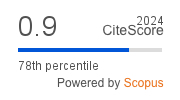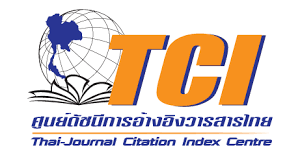Integrating Social and Therapeutic Models in Public Space Design: A Narrative Review Approach to Meeting the Needs of All Types of Disabilities
Keywords:
Social Models, Therapeutic Models, Inclusive Park, Needs of DisabilitiesAbstract
This research examines the integration of the social and therapeutic models of disability within public space and landscape design, aiming to address the gaps in current practices. While the social model focuses on removing societal and environmental barriers to promote accessibility, the therapeutic model emphasizes enhancing individual well-being through natural environments. Both models have been extensively studied in isolation, but their combination remains underexplored. This paper provides a comprehensive narrative review, demonstrating the potential for synthesizing these paradigms to create spaces that are both inclusive and therapeutic. Using interdisciplinary insights from urban planning, architecture, and health sciences, this study presents a framework for designing public spaces that foster accessibility, social inclusion, and holistic well-being. Through the analysis of case studies, the research highlights innovative design strategies that support the mental, physical, and emotional needs of diverse users, advocating for a more holistic approach in public space design. The findings underscore the importance of integrating accessibility and therapeutic principles to enhance the overall quality of life for all users.
References
Barnes, C. (1991). Disabled people in Britain and discrimination: A case for anti-discrimination legislation. Hurst & Co.
Barnes, C., & Mercer, G. (2003). Disability. Polity.
Bell, P. A., Greene, T. C., Fisher, J. D., & Baum, A. (2001). Environmental psychology. Harcourt College Publishers.
Borrell-Carrio, F., Suchman, A. L., & Epstein, R. M. (2004). The Biopsychosocial Model 25 years later: Principles, practice, and scientific inquiry. Annals of Family Medicine, 2(6), 576-582. https://doi.org/10.1370/afm.245
Boren, R. (2022). Stimpunks Foundation. https://stimpunks.org/author/ryan/
Cain, D. J. (2010). Person-Centered Psychotherapies. American Psychological Association. https://doi.org/10.1037/17330-000
Cooper Marcus, C. (1995). House as a mirror of self: Exploring the deeper meaning of home. Conari Press.
Engel, G. L. (1977). The need for a new medical model: A challenge for biomedicine. Science, 196(4286), 129-136.
Finkelstein, V. (1980). Attitudes and disabled people: Issues for discussion. World Rehabilitation Fund.
Gifford, R. (2007). Environmental psychology: Principles and practice (4th ed.). Optimal Books.
Gifford, R. (2014). Environmental psychology: Principles and practice. Optimal Books.
Graham, S. (2016). Vertical: The city from satellites to bunkers. Verso Books.
Hartig, T., Mang, M., & Evans, G. W. (2003). Restorative effects of natural environment experiences. Environment and Behavior, 23(1), 3-26. https://doi.org/10.1177/0013916591231001
Hartig, T., Mang, M., & Evans, G. W. (2003). Restorative effects of natural environment experiences. Environment and Behavior, 35(3), 311-330.
Imrie, R. (2012). Universal design and the problem of “accessibility”. Disability & Rehabilitation, 34(10), 873-882.
Imrie, R. (2012). Universalism, universal design and equitable access to the built environment. Disability and Rehabilitation, 34(10), 873-882.
Kaplan, R., & Kaplan, S. (1989). The experience of nature: A psychological perspective. Cambridge University Press.
Kaplan, S. (1995). The restorative benefits of nature: Toward an integrative framework.
Journal of Environmental Psychology, 15(3), 169-182. https://doi.org/10.1016/0272-4944(95)90001-2
Kellert, S. R., Heerwagen, J. H., & Mador, M. L. (Eds.). (2008). Biophilic design: The theory, science, and practice of bringing buildings to life. Wiley.
Kerdchuen, P., Arunsing, R., & Nimworaphan, B. (2022). Space as a Place for Social Interaction: A Case Study of Tai-Lao Communities. Journal of Architectural/Planning Research and Studies (JARS), 19(1), 13–22. https://doi.org/10.56261/jars.v19i1.168570
Kerdchuen, P., Nimworaphan, B., & Tangkijngamwong, N. (2022). Active Design and Physical Activity of Office Workers in Public Space. Journal of Architectural/Planning Research and Studies (JARS), 19(1), 1–12. https://doi.org/10.56261/jars.v19i1.168569
Kositwattanarerk, W., Panin, O., & Polakit, K. (2022). Assessing the Appropriateness of and Development Guidelines for an Age-friendly Community in Physical Aspect: A Case Study of Rangsit Municipality. Journal of Architectural/Planning Research and Studies (JARS), 19(1), 23–36. https://doi.org/10.56261/jars.v19i1.168571
Mace, R. L. (1985). Universal design, barrier free environments for everyone. Designers West.
Maller, C., Townsend, M., Pryor, A., Brown, P., & St Leger, L. (2006). Healthy nature, healthy people: 'Contact with nature' as an upstream health promotion intervention for populations. Health Promotion International, 21(1), 45-54.
Marcus, C. C., & Sachs, N. A. (2013). Therapeutic landscapes: An evidence-based approach to designing healing gardens and restorative outdoor spaces. Wiley.
Moore, A., & Lynch, M. (2016). Inclusive design: Implementation and review of accessibility in public parks. Landscape Research, 41(4), 486-504.
Nagaie, T. (2010). Security and Site Design: A Landscape Architectural Approach to Analysis, Assessment, and Design Implementation. Journal of Architectural/Planning Research and Studies (JARS), 7(1), 120-122.
Oliver, M. (1990). The politics of disablement. Macmillan.
Oliver, M. (1996). Understanding disability: From theory to practice. Palgrave.
Pretty, J., Peacock, J., Sellens, M., & Griffin, M. (2007). The mental and physical health outcomes of green exercise. International Journal of Environmental Health Research, 15(5), 319-337.
Proshansky, H. M., Ittelson, W. H., & Rivlin, L. G. (1970). Environmental psychology: Man and his physical setting. Holt, Rinehart & Winston.
Riggs, W. (2011). Inclusivity and public space: A study of the complete streets movement in the United States. Journal of Urban Design, 16(4), 456-474.
Rogers, C. R. (1951). Client-centered therapy: Its current practice, implications, and theory. Houghton Mifflin.
Rogers, C. R. (1980). A Way of Being. Houghton Mifflin.
Selanon, P. (2019). Environmentalism, Environmental Ethics, and Some Linkages with Landscape Architecture. Journal of Architectural/Planning Research and Studies (JARS), 9(2), 39-48. https://doi.org/10.56261/jars.v9i2.168552
Shakespeare, T. (2013). Disability rights and wrongs revisited. Routledge.
https://doi.org/10.4324/9781315887456
Steinfeld, E., & Maisel, J. (2012). Universal design: Creating inclusive environments. Wiley.
Sullivan, W. C. (2001). Community Greening through Therapeutic Horticulture: Putting Principles into Practice. Acta Horticulturae, 548, 127-134.
Temeeyakul, N., & Sirisali, P. (2024). Site Suitability Assessment for a Health and Recreation Center’s Public Space, Rangsit, Pathum Thani. Journal of Architectural/Planning Research and Studies (JARS), 21(2), 205-224.
Thomas, C. (2004). Disability and impairment: Challenging the orthodoxies. Disability & Society, 19(2), 91-105.
Ulrich, R. S. (1999). Effects of gardens on health outcomes: Theory and research. In C. C. Marcus & M. Barnes (Eds.), Healing Gardens: Therapeutic Benefits and Design Recommendations (pp. 27-86). John Wiley & Sons.
Ulrich, R. S., Simons, R. F., Losito, B. D., Fiorito, E., Miles, M. A., & Zelson, M. (1991). Stress recovery during exposure to natural and urban environments. Journal of Environmental Psychology, 11(3), 201-230.
Wade, D. T., & Halligan, P. W. (2004). Do biomedical models of illness make for good healthcare systems? BMJ, 329(7479), 1398–1401. https://doi.org/10.1136/bmj.329.7479.1398
Ward Thompson, C., Aspinall, P., & Bell, S. (2010). Innovative approaches to researching landscape and health: Open space: People space 2. Routledge.
Wilkins, P. (2010). Person-centred therapy: 100 key points. Routledge.
Wilson, E. O. (1984). Biophilia. Harvard University Press.
World Health Organization. (2001). International classification of functioning, disability and health (ICF). World Health Organization. https://apps.who.int/classifications/icf/en/
Downloads
Published
How to Cite
Issue
Section
License
Copyright (c) 2025 Thammasat Review

This work is licensed under a Creative Commons Attribution-NonCommercial-NoDerivatives 4.0 International License.
The opinions and ideas expressed in all submissions published in Thammasat Review are solely that of the author(s) and do not necessarily reflect that of the editors or the editorial board.
The copyright of all articles including all written content and illustrations belong to Thammasat Review. Any individuals or organisation wishing to publish, reproduce and distribute a particular manuscript must seek permission from the journal first.








